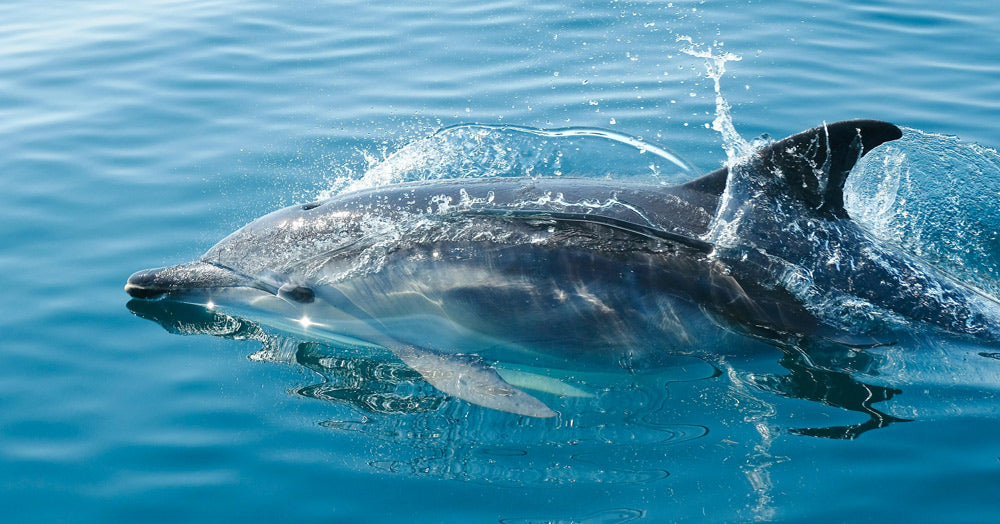Dolphins Exhale Microplastics as Pollution Invades Their Lungs
Matthew Russell
In an alarming discovery, scientists have found microplastic particles in the exhaled breath of dolphins, revealing yet another way that marine life is exposed to plastic pollution. This groundbreaking study, conducted by researchers from the College of Charleston, is the first to document dolphins inhaling microplastics, a form of pollution that has already been detected in human lungs and numerous ecosystems worldwide.
Microplastics, fragments of plastic smaller than 5 millimeters, are pervasive in the environment. They originate from larger plastic debris breaking down over time and are now found in oceans, on land, in the air, and even in remote regions like the Arctic. The study’s findings, published in PLOS ONE, bring to light the extent to which marine mammals are at risk from these invisible pollutants.

Dolphins are exhaling microplastics for the first time in recorded history.
Microplastics in Dolphin Breath
Scientists collected breath samples from bottlenose dolphins in Florida’s Sarasota Bay and Louisiana’s Barataria Bay as part of routine health assessments. These samples revealed the presence of microplastic fibers, similar in composition to those found in human lungs. The dolphins' breath contained plastic particles like polyester and polyethylene terephthalate (PET), materials used in common household products such as textiles and packaging.
Lead researcher Miranda Dziobak emphasized the significance of this discovery, noting how dolphins' large lung capacity and deep breaths may increase their susceptibility to inhaling airborne microplastics.
“We are concerned by what we are seeing because dolphins take very deep breaths,” she told the SC Daily Gazette.
Until now, the focus of most microplastic studies had been on ingestion, particularly through contaminated water and food. But as Plant Based News reports, this study shows that inhalation is another significant exposure route, potentially leading to harmful effects on the respiratory system of dolphins and other marine life.

Microplastic particles come from clothing fibers, packaging, and plastic waste.
Health Implications for Dolphins
The potential health risks posed by inhaling microplastics remain largely unknown. However, in humans, inhaled microplastics have been linked to lung inflammation, tissue damage, and respiratory diseases like pneumonia and bronchitis.
“It’s not unreasonable to suspect that dolphins might face similar respiratory issues,” Dr. Leslie Hart, the study’s co-author, told The New York Times.
The research also revealed that microplastic inhalation could affect other marine mammals that surface to breathe, exposing them to airborne particles released by wave activity. This concern is especially relevant in areas heavily impacted by human activity and plastic waste.
These findings raise concerns not only for dolphins but for human populations living near coastlines. As ZME Science reports, about 41% of the world’s human population lives near coastal areas, potentially sharing the same environment and food sources as dolphins, making microplastic pollution a shared problem.

Every breath dolphins take exposes them to harmful plastic particles.
What Is Next for Research?
Although this discovery marks a significant leap in understanding microplastic exposure, much remains to be studied. The researchers are now focused on determining the full extent of microplastic inhalation and whether these particles accumulate in dolphin lungs over time. Understanding how much plastic dolphins inhale and its long-term effects on their health will be crucial for assessing the true impact of this pollution.
Greg Merrill, a researcher at Duke University, commented on the study’s importance in an email to CNN. He highlighted that this study opens a door to further inquiries into how marine mammals, like dolphins, may be more exposed to microplastics than previously thought, both through inhalation and ingestion.
For now, the message is clear: plastic pollution has reached every corner of the globe, affecting both marine life and humans in ways we are only beginning to understand.

Bottlenose dolphins are especially vulnerable due to their large lung capacity.
What Can Be Done?
While research continues, it’s important for individuals and governments to take action in reducing plastic waste. Simple steps, like cutting down on plastic use and advocating for stricter environmental regulations, could go a long way in addressing the root causes of microplastic pollution.
“We know that plastics have contaminated virtually every part of the globe,” Hart told CNN. “There’s really no safe place to get away from it.”
As Wired reports, the long-term solution lies in reducing plastic production and improving waste management systems to prevent further damage to marine ecosystems and human health.
This study on dolphins' breath is yet another grim reminder of how pervasive plastic pollution has become. But it’s also a call to action—one that urges humanity to rethink its relationship with plastic before the damage becomes irreversible.
Click below to take action for dolphins!

